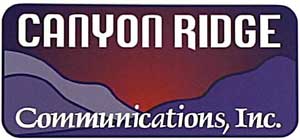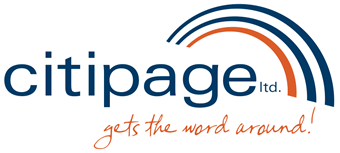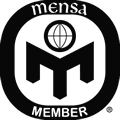|
Selected portions of the BloostonLaw Telecom Update, and/or the BloostonLaw Private Users Update — newsletters from the Law Offices of Blooston, Mordkofsky, Dickens, Duffy & Prendergast, LLP are reproduced in this section with the firm’s permission.
| BloostonLaw Telecom Update |
Vol. 18, No. 8 |
February 25, 2015 |
LAST CALL: CPNI Certifications Due March 2
The annual reports certifying compliance with the FCC’s rules protecting Customer Proprietary Network Information are due Monday, March 2. Failure to comply with the CPNI rules, including the annual certification requirement, may subject carriers to enforcement action, including monetary forfeitures of up to $160,000 for each violation or each day of a continuing violation, up to a maximum of $1,575,000.
A recent FCC Enforcement Advisory pointed out that CPNI certifications must be filed by March 1 of each year. Since March 1 falls on a Sunday this year, the annual CPNI report and certification would normally be due by Monday, March 2 under the FCC’s rules for deadlines that fall due on a weekend. However, in light of the harsh consequences of a missed filing and the Enforcement Advisory, BloostonLaw encourages clients to file early , i.e., on or before Friday, February 27.
Headlines
Uncertainty Grows as Net Neutrality Vote Approaches
On the eve of the FCC’s vote on the new Net Neutrality Order (currently scheduled for February 26), uncertainty looms high, with FCC Commissioners Ajit Pai and Michael O’Rielly calling for a delay in the vote, and Commissioner Mignon Clyburn asking for last-minute revisions.
The call for delay came in a joint statement by Pai and O’Rielly issued on February 23, which specifically requested a temporary delay of the upcoming FCC vote on Net Neutrality and that, in the interim, the FCC immediately release the document to the public for comment.
“With the future of the entire Internet at stake, it is imperative that the FCC get this right. And to do that, we must live up to the highest standards of transparency. Transparency is particularly important here because the plan in front of us right now is so drastically different than the proposal the FCC adopted and put out for public comment last May,” said the Commissioners.
In support of their plea, Pai and O’Rielly cited to an independent survey conducted last week by Hart Research Associates that apparently found 79% of respondents favored releasing the plan ahead of a vote. In a previous press release, Commissioner Pai cited to other results from the Hart study, such as 56% of participants indicating that the government should not “take a stronger and more active role in overseeing and regulating the Internet” and that 53% of respondents indicated they “believe that it would be harmful for the FCC to do what President Obama has requested and regulate the Internet using the same authority it has used to regulate telephone service.” It’s worth noting, however, that 74% of respondents indicated they “were not familiar with the term [Net Neutrality] and do not know what it refers to,” and that the question on whether it would be harmful for the FCC to regulate the internet began with the statement, “Over the past twenty-two years, the Internet has developed and grown into what we have today, with little government oversight, and has resulted in major private investment by the nation's wired and wireless providers in modern, high-speed broadband networks,” arguably biasing the response.
The full results and methodology of the survey are available here. [dead link]
The next day, on February 24, The Hill reported that FCC Commissioner Mignon Clyburn, one of the three Democratic FCC Commissioners, asked Chairman Tom Wheeler to “roll back some of the restrictions before the full commission votes on them,” according to FCC officials.
According to The Hill, Clyburn’s changes “would leave in place the central and most controversial component of Wheeler’s rules — the notion that broadband Internet service should be reclassified so that it can be treated as a “telecommunications” service under Title II of the Communications Act, similar to utilities like phone lines,” but would “eliminate a new legal category of “broadband subscriber access services,” created as an additional point of legal authority for the FCC to monitor the ways companies hand off traffic on the back end of the Internet.” Clyburn’s changes would also reportedly narrow the new standard for Internet service providers’ conduct contained in the Order.
Chairman Wheeler has apparently not yet responded to Commissioner Clyburn’s requests, begging the question of how the votes will fall tomorrow — if at all. In the meantime, Congress is considering how to shape this debate (see related story below).
FCC Clarifies Eligible Recovery True Up Process
On February 24, the FCC’s Wireline Competition Bureau issued an Order clarifying that a rate-of-return carrier that received too much Eligible Recovery in 2012-13 because of an under-projection of demand for that tariff period, and does not have sufficient Eligible Recovery in 2014-15 to fully offset the 2012-13 amount of over recovery, must refund the amount that is not offset to the Universal Service Administrative Company (USAC) to avoid duplicative recovery. The FCC further clarified that a rate-of-return carrier that received too little Eligible Recovery in 2012-13 because of an over-projection of demand for that tariff period may seek recovery for any amounts it was not able to recover through its 2014-15 Eligible Recovery from USAC.
By way of background, as part of the FCC’s USF/ICC Reform Order the Commission implemented a recovery mechanism to mitigate the impact of reduced ICC revenues on carriers called “Eligible Recovery.” This recovery mechanism incorporates in the Eligible Recovery calculation a true-up of the revenue difference between projected and actual demand for interstate and intrastate switched access services, reciprocal compensation, and the Access Recovery Charge (ARC) for the tariff period that began two years earlier. In conjunction with the 2014 annual tariff filing process, NECA informally sought clarification concerning a limited number of cases in which the true-up process did not work as outlined above and for which the rules do not provide an unambiguous resolution — i.e., where projected demand was either underestimated, or overestimated.
Blooston Rural Carriers Urge Bid Credit Reforms in Future Spectrum Auctions
BloostonLaw, on behalf of a group of its rural clients, filed comments last week pointing out that the recently-concluded AWS-3 auction (Auction 97) was an eye-opening experience for the rural telephone industry. More than half of the eligible bidders (38 out of 70) were rural telephone companies, rural telco affiliates or groups comprised of these entities. However, only a small handful (just 5) were successful bidders and able to claim eligibility for small business bid credits. The auction was dominated by three nationwide service providers, AT&T, Verizon Wireless and DISH Network, and almost all of the $3.57 billion in small business bidding credits went to “Special Purpose DEs” owned 85% by DISH Network. In sharp contrast, rural telephone companies (which are identified as DEs in Section 309(j) of the Communications Act), received just $871,350 in small business bidding credits in Auction 97.
The Blooston comments urge the FCC to retain and modify the Attributable Material Relationship (AMR) rule to allow bona fide arrangements among small businesses and/or rural telephone companies while bolstering the rule to keep bid credits out of the hands of nationwide service providers. A revised AMR rule should allow DEs to partner with rural carriers or other DEs, but not with nationwide carriers. The comments also urged that the FCC should expand its small business size definitions (since many rural telcos and other legitimate small businesses do not qualify for bid credits under the revenue limits set years ago); but Blooston also asks that the FCC implement a targeted rural telephone bid credit that is separate from and cumulative with any small business bidding credit. Blooston further recommends that the FCC adopt rural partitioning incentives to help ensure meaningful rural participation in upcoming auctions. Under this proposal, a large bidder that enters into an agreement to partition rural areas to an RLEC before, during or immediately after the auction would receive a discount on its winning bid, in addition to any compensation negotiated with the telco.
Reply comments are due March 6.
Law & Regulation
House Subcommittee to Hold Hearing on Proposed Internet Reform
As this edition of the BloostonLaw Telecom Update went to press, the House Energy & Commerce Committee’s Subcommittee on Communications and Technology is holding a hearing entitled The Uncertain Future of the Internet.
According to the official background memo for the hearing, concerns to be discussed during the hearing
include:
- Whether onerous government regulation of networks, and resulting uncertainty, can have a substantial
depressive effect on deployment, upgrades, and innovation;
- How domestic regulation of the Internet will impact international regulation;
- The exact mechanics of how the FCC will forbear from rate regulation, and particularly the extent to which it may be reversed or overturned by future Commissioners;
- Whether the FCC can really forbear from rate regulation;
- Whether reclassification will result in new fees; and
- How wireless will be included in new regulations.
Witnesses at the hearing are: Robert Atkinson, Founder and President of the Information Technology and Innovation Foundation; the Honorable Rick Boucher, Honorary Chairman of the Internet Innovation Alliance; Larry Downes, an Internet industry analyst and author; and Gene Kimmelman, President and CEO of Public Knowledge.
House Committee to Investigate FCC Decision-Making Process
Last week, the House Energy and Commerce Committee issued a notice announcing Chairman Fred Upton (R-Mich.), Communications and Technology Subcommittee Chairman Greg Walden (R-Ore.), and Oversight and Investigations Subcommittee Chairman Tim Murphy (R-Pa.) launched an investigation into the decision-making process of the FCC.
Beginning with a citation to “longstanding concerns with the fairness, openness, and transparency of several of the FCC’s administrative and rulemaking processes under [his] leadership,” the letter sent to Chairman Wheeler by the aforementioned congressmen sought “additional information to ascertain whether the Commission is fulfilling its statutory responsibilities.” The first concern addressed in the letter is the FCC’s use of delegated authority, the process by which it delegates to one of its bureaus the authority to address certain matters without full FCC vote. Instances noted in the letter include the Media Bureau’s recent policy change on broadcast sharing; a Public Notice related to the AWS-3 auction that was apparently placed on circulation to the full commission but later removed and delegated to the Wireless Telecommunications Bureau and an alleged attempt to employ the Wireless Telecommunications Bureau instead of the full FCC on the Grain Management waiver matter. The letter also expressed concern regarding the openness and fairness of the FCC’s rulemaking process, referencing reports that in May of 2014, the FCC allegedly withheld the final version of the Open Internet NPRM to be circulated at that time for “up to” 24 hours.
The letter requested the following information by March 4:
- Any documents on the provision of information requested by other Commissioners or their staff;
- Any documents relating to routine practices and processes of the bureaus within the FCC concerning compliance with the Administrative Procedure Act and the FCC’s own rules;
- Any documents relating to the use of delegated authority;
- Any documents relating to the discretion of the Chairman to use delegated authority;
- The FCC’s policy on the nature and scope of permissible communications between FCC personnel and outside entities;
- Documents relating to FCC staff use of personal email in the execution of official FCC business; and
- A description of the FCC’s document retention policies.
Comment Deadlines Set for Online Public File Expansion NPRM
On February 13, the FCC published its NPRM proposing to expand to cable operators, satellite TV providers, broadcast radio licensees, and satellite radio licensees the requirement that public inspection files be posted to the FCC’s online database rather than maintaining them on site. Comments are due on March 16, and reply comments on April 14.
The FCC originally adopted the online public file rules in 2012, applying them at that time only to television broadcasters. According to the NPRM, now that television broadcasters have completed the transition, the FCC believes it is appropriate to commence the process of expanding the rule to other media entities.
Industry
Idaho House Passes $3.6M Emergency Broadband Funding Bill
The Idaho Statesman is reporting that Idaho lawmakers approved last week a $3.6 million emergency funding bill to “sustain Idaho's troubled broadband program for a handful of months.”
The stopgap measure was approved 68-1 to sustain broadband access in nearly 200 public high schools after a district judge reaffirmed a prior ruling that the state's $60 million broadband contract was illegal earlier this year. According to the report, Idaho law forbids the use of taxpayer money on illegal contracts, so it became necessary to approve a new funding bill in order to maintain Internet access and video conferencing service. Unlike a statewide program, however, the bill reportedly requires school districts to negotiate their own broadband contracts and seek reimbursement later from the Idaho Department of Education.
Vendors have reportedly threatened to pull service as early as this week, as they have not been paid since a district judge first voided the contract in last November. The bill is now headed to the Idaho Senate for approval.
Calendar At A Glance
February
Feb. 25 – Reply comments are due on Unlicensed Use of TV Band and 600 MHz Band Spectrum.
Feb. 27 – Deadline for Special Access Data Collection for small businesses with less than 1,500 employees.
Feb. 27 – Reply comments are due on the FCC’s Incentive Auction Procedures.
March
Mar. 2 – Copyright Statement of Account Form for cable companies is due.
Mar. 2 – Annual CPNI Certification is due.
Mar. 2 – FCC Form 477 (Local Competition & Broadband Reporting) is due.
Mar. 6 – Reply comments are due on Part 1 Competitive Bidding NPRM.
Mar. 9 – Reply comments are due on Technology Transitions NPRM.
Mar. 9 – Reply comments are due on Windstream Petition for Declaratory Ruling on DS1/DS3 Access.
Mar. 9 – Comments are due on 911 Outage NPRM.
Mar. 11 – Reply comments are due on the IntraMTA Petition for Declaratory Ruling.
Mar. 16 – Deadline for comments on Online Public File Expansion NPRM.
Mar. 16 – Deadline to notify AT&T of Service Provided in CAF Phase I Deployment Census Blocks.
Mar. 31 – FCC Form 525 (Delayed Phasedown CETC Line Counts) is due.
Mar. 31 – FCC Form 508 (ICLS Projected Annual Common Line Requirement) is due.
Mar. 31 – International Circuit Capacity Report is due.
April
Apr. 1 – FCC Form 499-A (Annual Telecommunications Reporting Worksheet) is due.
Apr. 1 – Annual Accessibility Certification is due.
Apr. 7 – Reply comments are due on 911 Outage NPRM.
Apr. 14 – Deadline for reply comments on Online Public File Expansion NPRM.
| BloostonLaw Private Users Update |
Vol. 16, No. 2 |
February 2015 |
FCC Issues Enforcement Advisory on Interference with Wi-Fi Hot Spots
On January 27, the FCC’s Enforcement Bureau issued an Enforcement Advisory stating that no hotel, convention center, or other commercial establishment, or the network operator providing services at such establishments, may intentionally block or disrupt personal Wi-Fi hot spots on such premises, including as part of an effort to force consumers to purchase access to the property owner’s Wi-Fi network. According to the Bureau, such action is illegal and violations could lead to the assessment of substantial monetary penalties.
The Advisory is a direct result of an investigation by the Bureau of Marriott International, Inc., which had deployed a Wi-Fi de-authentication protocol to deliberately block customers seeking to connect to the Internet through their own personal Wi-Fi hotspots while on Marriott property. Marriott settled the investigation by paying a civil penalty of $600,000.
Following the investigation, the Bureau reportedly received a number of additional complaints suggesting that other commercial Wi-Fi network operators may be doing the same. The Bureau indicated it is investigating these complaints and will take appropriate action against violators.
FCC Denies The Conley Group’s Petition for Use of Five Nationwide VHF Interoperability Channels
The FCC has denied The Conley Group’s Petition for Reconsideration seeking to license five nationwide VHF interoperability channels. The FCC stated that Conley claimed that it was necessary for it to use these channels on a state-wide basis throughout Iowa so that it could “establish communication[s] with all affected law enforcement agencies during times of imminent threat to safety-of-life or property in connection with mutual activities.” Additionally, Conley asserted that “the ability to communicate with emergency personnel from outside of Polk County[, Iowa] is critical in case emergency response is required in another area of the state. Conley had the support of the Polk County Sheriff’s Department — which stated that Conley provides force protection for governmental and critical infrastructure facilities and that the Iowa Department of Public Safety has provided Conley with access to certain public safety channels on its system.
Nonetheless, the FCC dismissed the underlying application because Rule Section 90.20 does not authorize private security companies to hold public safety spectrum. In dismissing the application, the FCC’s staff noted that Conley “already has authority to operate on public safety interoperability channels consistent with other FCC rule sections and its agreement with the State of Iowa.
On reconsideration, Conley asserted that in addition to protection of critical infrastructure, it provides “emergency rescue services” to communities within Polk County and surrounding areas within Iowa. Conley states that it works closely with law enforcement as well as fire services and emergency management and other govern-mental agencies to provide operational services or support to incident commanders.
The FCC, in denying reconsideration, noted among other things, that the VHF interoperability channels were allocated to promote governmental interoperability nationwide. And while the FCC has permitted certain non-governmental entities to hold public safety spectrum, such grants have required a statement from the governmental entity having legal jurisdiction over the area to be served by the supporting request. Here, Conley is requesting a state-wide service area, but has only obtained a letter of support from Polk County when the appropriate jurisdiction would be the State of Iowa. The FCC also noted that Conley is a private entity that provides armed guard, private investigation, alarm response, consulting services and rescue services in the Polk County area and holds licenses in the Conventional Industrial/Business Pool — and that Conley had stated that it was “in the security business and radios are used to protect, citizens, property and provide similar services for hire.” Additionally, the FCC determined that Conley was seeking to license an inordinate number of mobile units in comparison to the number of vehicles that has.
The FCC stated that it shares the Iowa DPS’ concerns that Conley could use the public safety spectrum for both business and public safety uses. Further, the FCC is concerned that licensing interoperability spectrum to private security and property management firms such as Conley could result in these interoperability channels becoming “overrun with multiple private security and property management companies also claiming to be “rescue squads.” The FCC concluded that such a result could alter the specialized nature of the interoperability channels and thus undermine the FCC’s goal of promoting governmental interoperable communications on a nationwide basis.
PSAP Text-to-911 Readiness and Certification Registry Now Available
The FCC has announced availability of a new “Text-to-911 Registry” listing PSAPs that are ready to receive text-to-911 messages, and providing notice to CMRS providers and other providers of interconnected text messaging services of the notice date of PSAP readiness. The Registry is in the form of an Excel spread-sheet and is available via the FCC’s web site at: http://www.fcc.gov/encyclopedia/psap-text-911-readiness-and-certification .
The Text-to-911 Registry lists each PSAP by FCC PSAP ID and name, the county of operation, the primary point of contact for coordinating text-to-911 service, the method by which the PSAP will accept texts, and the state or local governing entity authorizing the PSAP to accept texts.
Under the FCC’s text-to-911 rules, covered text providers must begin routing 911 text messages to requesting PSAPs by June 30, 2015, or within six months of a valid PSAP request, whichever is later. To constitute a “valid PSAP request,” (1) the PSAP must certify that it is technically ready to receive 911 text messages in the format requested; (2) the appropriate local or State 911 service governing authority must have authorized the PSAP to accept and, by extension, the covered text provider to provide, text-to-911 service; and (3) the requesting PSAP must notify the covered text provider that it is both technically ready to receive 911 text messages and has been authorized to accept such messages.
We would normally expect that PSAPs will contact and work with CMRS and covered text providers in the process of implementing text-to-911 capability. However, since the Commission has held that registration in the database is one way that PSAPs may trigger text-to-911 obligations, covered text providers should periodically review the registry to learn about text-readiness of PSAPs in their service areas and reach out to these PSAPs as necessary to coordinate implementation of text-to-911 service. Public safety entities should in turn reach out to service providers, in addition to registering. The Commission has said it will regularly update the Text-to-911 Registry, so our clients may want to book-mark the registry web page and check back on a regular ( e.g., monthly) basis for any changes.
The Price of Privacy? $30 Per Month, According to AT&T
The Wall Street Journal’s technology blog is reporting that AT&T’s relatively recent 1 Gbps internet service called GigaPower (debuted in Austin, Texas in 2013 and just this past Tuesday in Kanas City, Missouri) comes with a unique twist: AT&T uses GigaPower customers’ search terms, Web pages visited, and links clicked to help advertisers target ads on Web pages, email messages or direct mail. According to WSJ, the tracking remains in effect “even if you clear cookies, use an ad block program, or switch on a browser’s do-not-track settings.”
According to the company’s FAQs, some examples of how the data will be used include:
- If you search for concert tickets, you may receive offers and ads related to restaurants near the concert venue.
- After you browse hotels in Miami, you may be offered discounts for rental cars there.
- If you are exploring a new home appliance at one retailer, you may be presented with similar appliance options from other retailers.
Customers can opt out of the usage tracking for a price — $30 per month (on top of the $70 per month service fee). WSJ reported that a spokeswoman for GigaPower con-tends that the privacy option not as an added fee, but as a discount for customers that allow the company to use their information. “We can offer a lower price to customers participating in AT&T Internet Preferences because advertisers will pay us for the opportunity to deliver relevant advertising and offers tailored to our customer’s interests,” she said.
FCC and FDA to Hold Joint Workshop on Wireless Medical Device Test Beds
On March 31, 2015, the FCC and the FDA will host a public workshop on the role of wireless medical test beds and their influence on the development of converged medical technology in both clinical and non-clinical set-tings — especially with the development of “hospitals-at-home.” A wireless test bed is an environment where devices can be evaluated across a range of interference scenarios.
The FCC and FDA are seeking participation from a broad range of stake holders, including device manufacturers, healthcare facilities, clinicians, test labs, standard setting bodies, innovators, patient safety groups, researchers, and entrepreneurs. For those that are unable to attend, but may have an interest, questions can be e-mailed to: testbeds@fcc.gov noting “Workshop Questions” in the subject line. If you would like to attend, please e-mail the FCC at testbeds@fcc.gov with “Registration” in the subject line. The workshop will be from 9:00 AM until 4:30 PM in the FCC Commission Meeting Room.
FCC Designates ASHE/AHA as the Frequency Coordinator for Medical Body Area Operations
The FCC has designated the American Society for Health Care Engineering of the American Hospital Association (ASHE/AHA) to serve as the Medical Body Area Network (MBAN) frequency coordinator in the 2360-2400 MHz band. This designation comes after issuing a public notice seeking applicants for this position. The only other entity to submit an application was Enterprise Wireless Association (EWA). In evaluating the applications, the FCC noted that ASHE/AHA was “uniquely qualified” by “virtue of its institutional knowledge of the health care industry in general, and its familiarity with the medical telemetry user community in particular.” The FCC also noted that ASHE/AHA was a stronger candidate than EWA because of its experience as the Wireless Medical Telemetry Service (WMTS) coordinator. Like MBAN, WMTS requires ASHE/AHA to coordinate in an environment that requires “the need to avoid harmful interference from or among license-by-rule operations in medical environments.”
The FCC will require ASHE/AHA to sign a memorandum of understanding which will outline its duties and the limits on its authority.
Under the Commission’s Rules, a health care facility will be required to register an MBAN device that is capable of operating in the 2360-2400 MHz band with the MBAN coordinator. If the health care facility intends to operate MBAN devices only in the 2390-2400 MHz band, then the MBAN coordinator will include the pertinent registration data in the MBAN database. However, if operations will be in the 2360-2390 MHz band, then the MBAN coordinator will be required to determine whether the pro-posed MBAN location will be within the line-of-site of an Aeronautical Mobile Telemetry (AMT) receiver, and if so, work in cooperation with the AMT frequency coordinator (who in this case is the Aerospace and Flight Test Radio Coordinating Council) and the affected health care facility in order to minimize any potential interference. It is important to note that the FCC’s rules will require the MBAN frequency coordinator to (a) provide service to all eligible parties on a non-discriminatory basis, (b) have a fee schedule that is reasonable and reflects its actual costs for providing coordination and registration services and (c) serve as the coordinator for at least 10 years.
|
















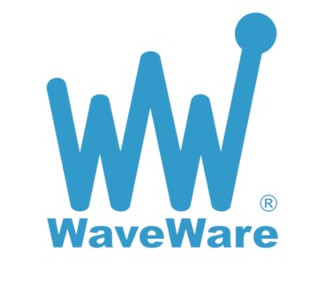



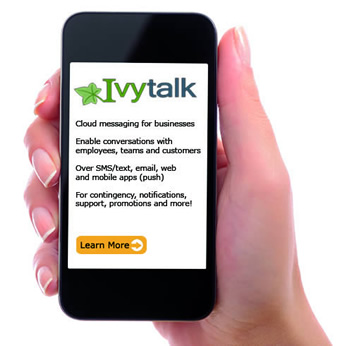
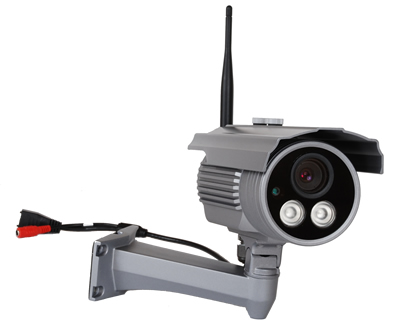











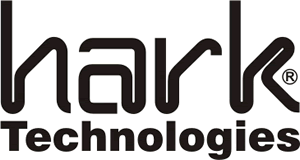
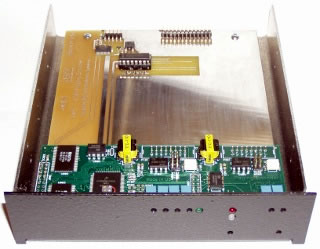

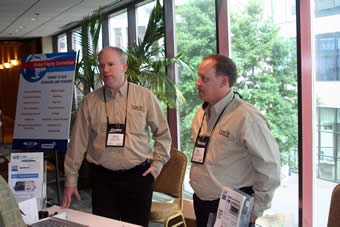 David George and Bill Noyes
David George and Bill Noyes 





